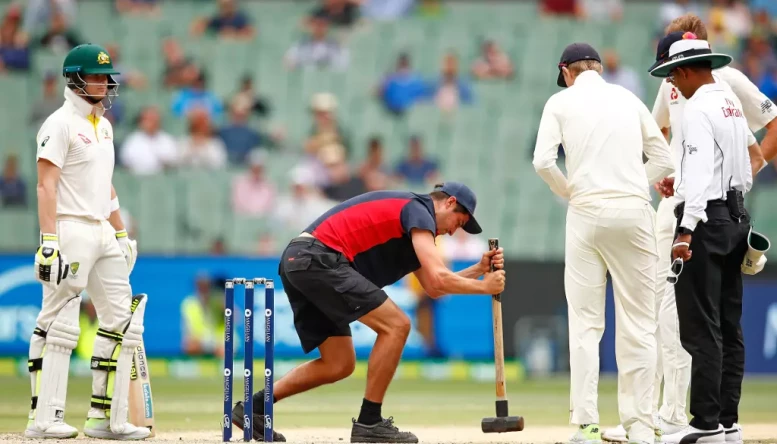Cricket News: Why undercooked pitches harm the appeal of Test cricket
The end of the calendar year 2022 sees a lot of Test cricket being played. England are playing a three-match series in Pakistan; South Africa are touring Australia for a Test series of the same length.
 Gabba in Brisbane they do not have a drop-in pitch
Gabba in Brisbane they do not have a drop-in pitchIndia are also taking on Bangladesh away from home. That's a great thing for fans of the most extended format of the game. Yet question marks remain over the quality of the matches.
And this isn't down entirely to one team being much stronger than the other – although that certainly hasn't helped. But it's more down to the quality of the pitches that the matches are being played.
In Test cricket, bat and ball should be evenly matched - or at least as even as possible. It also needs to ebb and flow, with advantages to the batters and bowlers changing as the match goes on.
Yet, in the Test matches, we have witnessed in these three series, none of those aforementioned factors have been found.
The first Pakistan vs England Test grabbed some attention for the number of runs scored, but that was facilitated by a pitch so flat many likened it to a highway road.
Then the first India vs Bangladesh Test was also played out on a pitch that aided batting and, even as the days wore on, offered only minimal assistance to the bowlers – whether slow or fast.
That's one of the reasons Bangladesh managed to make it to Day five, to begin with. But spare a thought for South Africa; their first Test against Australia was over in two days!
And in their case, it was due to the opposite problem – the Gabba pitch where the game was played was so spicy that batters never really had a chance.
<blockquote class="twitter-tweet"><p lang="en" dir="ltr">This at the Gabba isn't unplayable but a very difficult pitch to bat on. Almost too difficult. A proper, spicy Andhra curry that is edible but leaves you gasping.....</p>— Harsha Bhogle (@bhogleharsha) <a href="https://twitter.com/bhogleharsha/status/1604349905782333446?ref_src=twsrc%5Etfw">December 18, 2022</a></blockquote> <script async src="https://platform.twitter.com/widgets.js" charset="utf-8"></script>
It is telling that the match saw 34 wickets fall in less than two days and a combined total of just 504 runs scored over four innings!
Now there's no doubt that all the games had their moments – but will such extreme results do much for the game's popularity?
Probably not. As mentioned before, the appeal of Test cricket is that it should test the players, whether they are batsmen or bowlers.
The batters had it reasonably easy in India vs Bangladesh and Pakistan vs England Test matches. In the Australia vs South Africa Test match, it was time for the bowlers to make hay.
But in an era where Test match cricket seems to be fighting more and more for relevance than ever, thanks to the advent of once-a-year ICC tournaments as well as the proliferation of T20 franchise leagues – and The Hundred – it does the most extended format of the game no favours to be playing on such lopsided pitches.
Yes, it is better to play Tests on terrible pitches than to play no Test cricket at all. But the powers that be should be striving for something other than the bare minimum for cricket's traditional format while chasing white-ball riches.
More needs to be done to protect the game, which starts with ensuring better pitches are offered to teams.
Editor's Picks
- 01
Brendon McCullum: England ready to be 'really brave' in team selection for India series
- 02
Diogo Jota inspires Liverpool surge as injuries fail to dampen Premier League lead
- 03
Cameron Norrie ready to go toe-to-toe with the big boys after stellar Australian Open run
- 04
Maxwel Cornet confident of scoring run after opening West Ham account